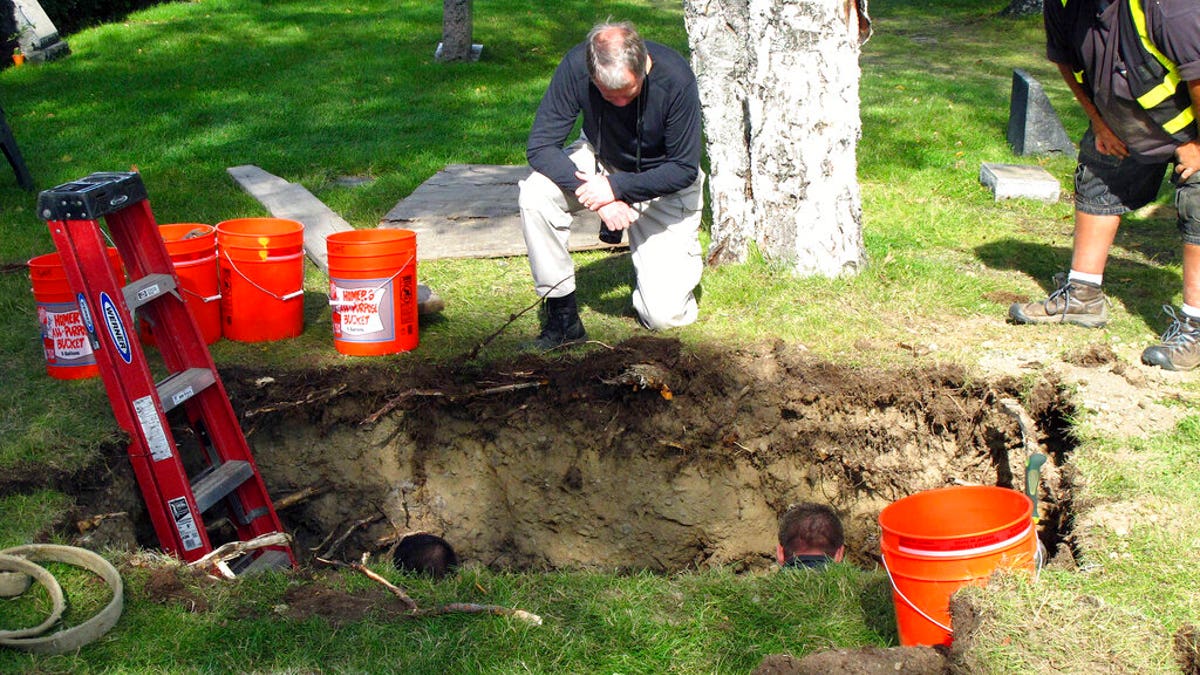Fox News Flash top headlines for October 23
Fox News Flash top headlines are here. Check out what's clicking on Foxnews.com.
A victim of an Alaskan serial killer has finally been identified after almost 40 years thanks genetic genealogy and a DNA match.
Robin Pelky, who was 19 at the time, was killed by Robert Hansen, known as the "Butcher Baker," in the early 1980s. For 37 years, she was only known as "Horseshoe Harriet," one of a dozen or so of Hansen’s victims.
"I would like to thank all of the troopers, investigators, and analysts that have diligently worked on this case over the last 37 years," Alaska Department of Public Safety Commissioner James Cockrell said in a statement. "Without their hard work and tenacity, the identity of Ms. Pelkey may have never been known."

CORRECTS NAME TO ROBIN PELKEY, INSTEAD OF HARRIET ROBIN PELKEY - This undated photo released by the Alaska State Department of Public Safety shows Robin Pelkey just before her 18th birthday. The remains of a woman known for 37 years only as Horseshoe Harriet, one of 17 victims of a notorious Alaska serial killer, have been identified through DNA profiling as Robin Pelkey, authorities said Friday, Oct. 22, 2021. (Alaska State Department of Public Safety via AP)
Pelky, a sex worker, had no identification on her body when investigators found her. Hansen told investigators that he had taken her to Horseshoe Lake in a small plane, murdered her and discarded the body, but he knew nothing about her.
BRIAN LAUNDRIE'S LAWYER SHEDS LIGHT ON MOMENT PARENTS LEARN OF POSSIBLE REMAINS
Pelky was buried in the Anchorage Municipal cemetery as an unknown, but investigators exhumed her body in 2014 when Hansen died in prison at the age of 75.

CORRECTS VICTIM'S NAME TO ROBIN PELKEY, INSTEAD OF HARRIET ROBIN PELKEY - FILE - In this Sept. 3, 2014, file photo, workers and medical examiner crew members exhume the body of Jane Doe #3 from a cemetery in Anchorage, Alaska. The remains of a woman known for 37 years only as Horseshoe Harriet, one of 17 victims of a notorious Alaska serial killer, have been identified through DNA profiling as Robin Pelkey, authorities said Friday, Oct. 22, 2021. (AP Photo/Rachel D'Oro, File)
A bone sample provided DNA, which troopers used to generate a profile and add to a public access gene database in April. Troopers found several close matches and identified close relatives located in Arkansas and Alaska.
IN LONG ISLAND SERIAL KILLER INVESTIGATION, NEW PHONE TECHNOLOGY MAY BE KEY TO BREAK IN CASE
A relative in Arksansas provided DNA that allowed troopers to positively identify Pelky, and her family was notified in September. No one could say why her parents didn’t report her missing at the time.

This October 1971 file photo shows Alaska serial killer Robert Hansen. The remains of woman known for 37 years only as Horseshoe Harriet, one of 17 victims of Hansen, have been identified through DNA profiling as Robin Pelkey, authorities said Friday, Oct. 22, 2021. (Anchorage Daily News via AP)
Hansen abducted women – many of them sex workers – in the wilderness just north of Anchorage when the city’s population boomed due to construction of the trans-Alaska pipeline.
TEXAS WOMAN'S DISMEMBERED BODY STUFFED INSIDE CRATE, SON CHARGED WITH MURDER
Glenn Flothe, a retired state trooper who helped apprehend Hansen, said during a 2008 interview that Hansen started to target sex workers when he learned that they were harder to track and less likely to be missed.
Hansen was convicted in the deaths of four women but confessed to killing more. He led investigators to a spot north of Anchorage where he pointed out where he had buried 17 of his victims.
Troopers dug up the remains of eight of the women, allowing them to work to identify a total of 12 of Hansen’s victims: Only 11 have now been identified, with the last one known as "Eklutna Annie," believed to be Hansen’s first victim, discovered near Eklutna Lake.
CLICK HERE TO GET THE FOX NEWS APP
Thanks to the genetic genealogy effort that helped identify Pelky, troopers remain hopeful that the final victim may be identified sooner rather than later.
Randy McPherron, an Alaska State Troopers cold case investigator, told the Associated Press that the process could take up to a year.


